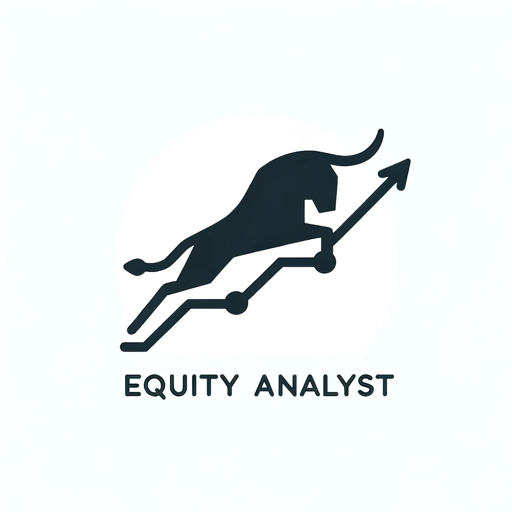
Debt-to-Equity - Financial Leverage Analysis

Welcome! Let's analyze your financial leverage.
Optimize your leverage with AI-driven insights
Enter your company's total liabilities and shareholders' equity to calculate the debt-to-equity ratio.
Input your business's debt and equity figures for an accurate financial leverage analysis.
Provide your firm's financial data to assess risk and balance using the debt-to-equity ratio.
Submit your enterprise's liabilities and equity amounts to determine your financial health.
Get Embed Code
Understanding Debt-to-Equity
The Debt-to-Equity Analyzer, or Debt-to-Equity, is designed to assist businesses in evaluating their financial leverage by calculating the debt-to-equity ratio. This ratio is a critical financial metric that compares a company's total liabilities to its shareholder equity, offering insights into its financial structure and risk level. A higher ratio indicates that a company may be taking on too much debt, increasing its risk, whereas a lower ratio suggests a more conservative approach with potentially less risk but also possibly less opportunity for high returns. For example, a startup seeking to expand rapidly may have a high debt-to-equity ratio due to borrowing, indicating a high-risk, high-reward strategy. In contrast, a well-established corporation might show a lower ratio, reflecting a more stable but slower growth approach. Powered by ChatGPT-4o。

Core Functions of Debt-to-Equity
Ratio Calculation
Example
For a business with $200,000 in total liabilities and $100,000 in shareholder equity, the debt-to-equity ratio would be calculated as 2.0. This indicates that the company uses twice as much debt as equity in its financing.
Scenario
This function is crucial for businesses assessing their financial strategies and risk before making decisions on taking on new debt or altering their equity structure.
Risk Assessment
Example
Analyzing the calculated ratio, Debt-to-Equity can provide insights into the financial risk a company faces. A ratio of 1.5 might be deemed acceptable in a capital-intensive industry, whereas in a service-based sector, it could signal excessive risk.
Scenario
This helps companies understand how their financial leverage compares to industry standards, aiding in strategic planning and risk management.
Recommendations for Balance
Example
Based on the debt-to-equity ratio and industry benchmarks, Debt-to-Equity might recommend strategies to balance debt and equity. This could involve issuing new equity or refinancing existing debt under more favorable terms.
Scenario
This is particularly useful for companies looking to optimize their capital structure for future growth or stability.
Who Benefits from Debt-to-Equity?
Startups and Growth Companies
These entities often rely on debt for growth and expansion. Understanding their debt-to-equity ratio helps them manage risk while capitalizing on opportunities, ensuring they don't over-leverage.
Established Corporations
For corporations with complex capital structures, monitoring the debt-to-equity ratio is essential for maintaining an optimal balance between debt and equity, facilitating sustainable growth and shareholder value.
Investors and Analysts
Investors and financial analysts use the debt-to-equity ratio to assess the financial health and risk profile of potential investment opportunities, making informed decisions based on the company's leverage.

Guidelines for Utilizing Debt-to-Equity Analyzer
Initiate Your Journey
Begin by accessing a comprehensive debt-to-equity analysis with no initial login required at yeschat.ai, offering a seamless start without the need for a ChatGPT Plus subscription.
Gather Financial Statements
Prepare your company's latest financial statements, including the balance sheet and income statement, to accurately calculate your debt-to-equity ratio.
Input Your Data
Enter your total liabilities and total equity figures into the Debt-to-Equity Analyzer to compute the ratio, providing a clear view of your financial leverage.
Analyze the Results
Review the calculated debt-to-equity ratio to understand your company's leverage level, compare it against industry standards, and assess financial risk.
Strategize for Improvement
Use the insights from the analysis to make informed decisions on managing your company's debt levels, considering equity financing options to optimize your capital structure.
Try other advanced and practical GPTs
research Master
Deciphering Academic Complexity with AI

Salad Guide
Crafting Your Ideal Salad with AI

Ragga Responder
Bringing Dancehall Vibes to AI Conversations

Sleek Marketer
Empowering your emails with AI

SPARKLE
Crafting Words with AI Brilliance

"Lögfræðingur"
Empowering Legal Decisions with AI

MessengerFlow Creator
Empower conversations with AI-driven chatbots

VSL Script Creator
Transform ideas into sales with AI

Startup Strategist
Empowering Entrepreneurs with AI

Market Prompt Genius
Elevate Marketing with AI Power

Subs
Dive Deep into the World of Subs with AI

Abogado Experto en Derecho Civil
AI-powered legal advice for Colombian Civil Law

Frequently Asked Questions About Debt-to-Equity Analyzer
What exactly is the Debt-to-Equity Ratio?
The debt-to-equity ratio is a financial metric that compares a company's total liabilities to its shareholder equity. It's a measure of the degree to which a company is financing its operations through debt versus wholly owned funds.
Why is monitoring the Debt-to-Equity Ratio important?
Monitoring this ratio is crucial for assessing a company's financial health and risk level. A high ratio indicates a reliance on debt, potentially signaling financial vulnerability, whereas a lower ratio suggests a healthier balance between debt and equity.
Can the Debt-to-Equity Ratio vary by industry?
Yes, acceptable debt-to-equity ratios can vary significantly across industries due to different capital intensity levels. For instance, manufacturing firms often have higher ratios than service-based companies due to the former's greater need for physical assets.
How can businesses improve their Debt-to-Equity Ratio?
Businesses can improve their ratio by reducing debt, increasing equity through retained earnings or issuing more shares, or a combination of both. Strategies must be tailored to the company's specific financial situation and industry context.
Does the Debt-to-Equity Analyzer offer tailored advice?
While the Debt-to-Equity Analyzer provides a robust analysis of your financial leverage, it primarily offers insights and benchmarks. For personalized advice, integrating these insights with professional financial consultancy is recommended.





